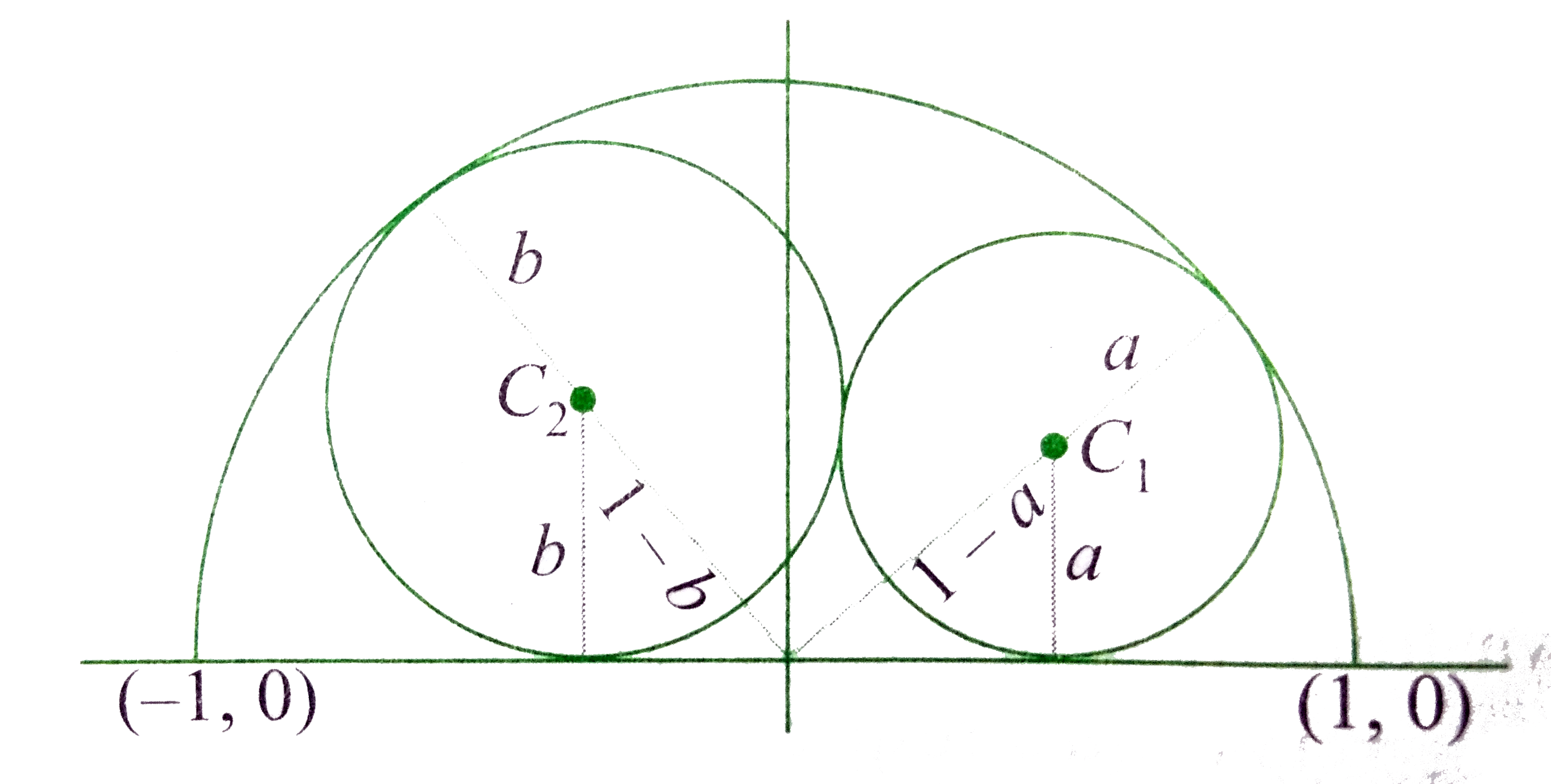Two circles of radii aandb touching each other externally, are inscribed in the area bounded by y=√1−x2 and the x-axis. If b=12, then a is equal to 14 (b) 18 (c) 12 (d) 1√2
1/4
1/8
1/2
1/√2
The correct Answer is:1

Let the centers of the circle be C1 and C2.
Then C1 is (√1−2a,a) and C2 is (√1−2b,b) . Now,
C1C2=a+b=a+12
or 1−2a+(a−12)2=(a+12)2
or a=14
Topper's Solved these Questions
- BOOK - CENGAGECHAPTER - CIRCLE EXERCISE - Exercise (Multiple)25videos
CIRCLE
- BOOK - CENGAGECHAPTER - CIRCLE EXERCISE - Exercise (Comprehension)46videos
CIRCLE
- BOOK - CENGAGECHAPTER - CIRCLE EXERCISE - Exercise 4.65videos
CIRCLE
- BOOK - CENGAGECHAPTER - BINOMIAL THEORMEXERCISE - Question Bank31videos
BINOMIAL THEORM
- BOOK - CENGAGECHAPTER - CIRCLESEXERCISE - Question Bank32videos
CIRCLES
Similar Questions
Two circles of radii aandb touching each other externally, are inscribed in the area bounded by y=√1−x2 and the x-axis. If b=12, then a is equal to 14 (b) 18 (c) 12 (d) 1√2
View SolutionIf a differential equation is given by dydx=2(x+1) and area bounded by y(x) with x-axis is 4⋅√83 then y(1) is
View Solution
Knowledge Check
- Question 1 - Select One
The area bounded by y=sin−1x,x=1√2 and X-axis is
A(1√2+1) sq unitsB(1−1√2) sq unitsCπ4√2 sq unitsD(π4√2+1√2−1) sq units - Question 2 - Select One
The area bounded by the x-axis, the curve y=f(x), and the lines x=1,x=b is equal to √b2+1−√2 for all b>1, then f(x) is √x−1 (b) √x+1 √x2+1 (d) x√1+x2
A√x−1B√x+1C√x2+1Dx√x2+1 - Question 3 - Select One
The area bounded by y=√1−x2 and y=x3−x is divided by y - axis in the ratio λ:1(∀λ>1), then λ is equal to
Aπ+1π−1Bππ−1Cπ+1πDπ+2π−2
The area bounded by the curve y=secx, the x-axis and the lines x=0 and x=π4 is (A) log(√2+1) (B) log(√2−1) (C) 12log2 (D) √2
View SolutionThe area bounded by y=∣∣e|x|−e−x∣∣, the x-axis and x=1 is (A) ∫10(ex−e−x)dx (B) e+e−1−2 (C) e+e−1+2 (D) (√e−1√e)2
View SolutionTwo circles of radii r1andr2(r1>r2) touch each other externally. Then the radius of circle which touches both of them externally and also their direct common tangent is (A) r1r2(√r1+√r2)2 (B) √r1r2 (C) r1+r22 (D) r1−r22
View SolutionIf √y=4x , then x2y is (a) 2 (b) 116 (c) 14 (d) 4
View SolutionThe area bounded by the x-axis, the curve y=f(x) and the lines x =1, x =b, is equal to √b2+1−√2 for all b>1, then f(x) is
View Solution

